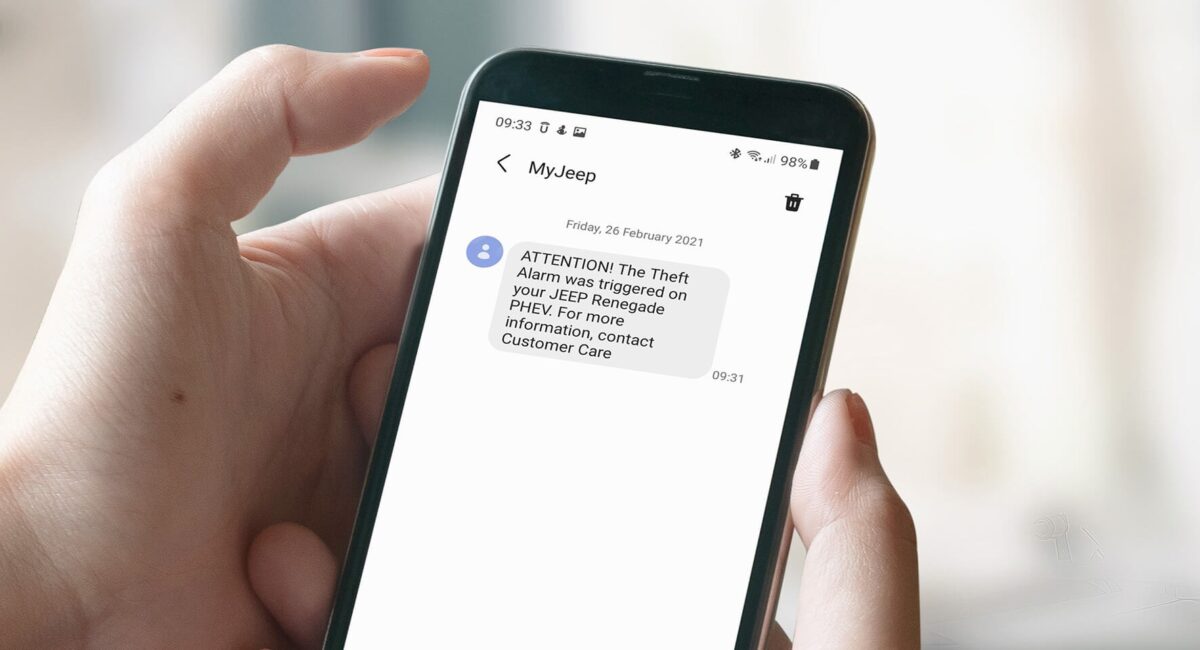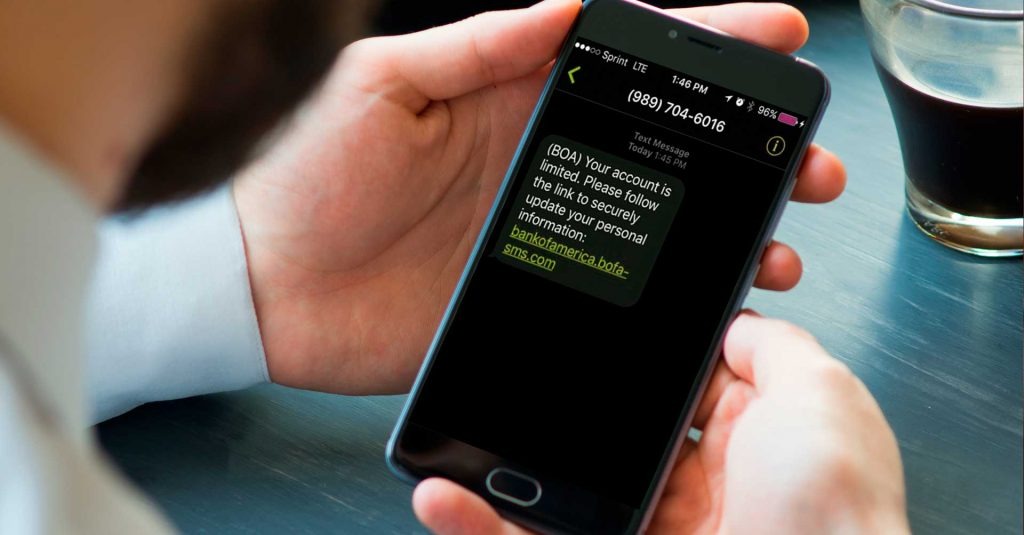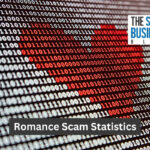The following smishing statistics for 2024 will give you an overview of the urgency of knowing more about this cybercrime and some things to avoid it.
Smishing is also referred to as spam texting because it occurs via text messaging.
In today’s digital age, cybercrime is an ever-present threat.
Smishing is one of the most common types of cyberattacks that target individuals and businesses worldwide.
Smishing is a type of attack where attackers use SMS messages to trick their victims into revealing sensitive information, while phishing is a type of attack that involves sending fraudulent emails that ask for sensitive information.
Let’s learn some important statistics about smishing and how to manage it at home, school, or at work.
Post Contents
- 1 Key Statistics
- 2 Vital Smishing Statistics You Should Know in 2024
- 2.1 1. The Federal Trade Commission (FTC) Logged 378,119 Complaints About Unwanted Texts in 2021.
- 2.2 2. In 2022, 29% of Survey Respondents Said They Know What Smishing is.
- 2.3 3. In 2022, Scammers Sent Out a Massive 225.7 Billion Spam Texts Via Robotexts.
- 2.4 4. The Average Number of Smishing Texts Received by Americans Came to 14.7 Per Month in 2020.
- 2.5 5. In 2020, 21% of All Fraud Reported Came from Smishing.
- 3 Types of Smishing Scams
- 3.1 6. The Most Used Form of Smishing Type Involves Fake Tax Refund Scams.
- 3.2 7. In 2021, Over One-Quarter of Scam Texts Were Reported as Package Delivery Scams.
- 3.3 8. Spam Texts with Fake Information About Free Covid-19 Tests Accounted for Over 5.6 Billion Scam Texts Sent in 2021.
- 3.4 9. In 2021, Fraudulent Bank Texts Accounted for Over 3 Billion Scam Texts.
- 3.5 10. In 2021, Over 1 Billion Healthcare Spam Texts were Sent.
- 4 The Cost of Smishing
- 4.1 11. In 2022, Cybercriminals Stole a Massive $20.6 Billion (USD) from Americans.
- 4.2 12. Smishing Scams Cost Americans Over $50 Million (USD) in 2020.
- 4.3 13. In 2021, Over 320,000 Americans Fell Victim to SMS Phishing (Smishing) Scams and Lost a Combined $44 Million (USD).
- 4.4 14. The Cost of Mental Health is an Issue Caused by Smishing Fraud.
- 4.5 15. Identity Theft is a Real After Effect of Smishing Scams.
- 5 Smishing Demographics
- 6 FAQs
- 7 Examples of Smishing Attacks
- 8 Conclusion
- 9 Sources
Key Statistics
- The Federal Trade Commission (FTC) logged 378,119 complaints about unwanted texts in 2021.
- 1.1 billion spam texts are sent every minute.
- In 2022, 29% of survey respondents said they know what smishing is.
- In 2022, scammers sent out a massive 225.7 billion spam texts via robotexts.
- The average number of smishing texts received by Americans came to 14.7 per month in 2020.
- In 2020, 21% of all fraud reported came from smishing.
- The most used form of smishing type involves fake tax refund scams.
- In 2021, over one-quarter of scam texts were reported as package delivery scams.
- Spam texts with fake information about free COVID-19 tests accounted for over 5.6 billion scam texts sent in 2021.
- In 2021, fraudulent bank texts accounted for over 3 billion scam texts.
- In 2021, over 1 billion healthcare spam texts were sent.
Vital Smishing Statistics You Should Know in 2024

1. The Federal Trade Commission (FTC) Logged 378,119 Complaints About Unwanted Texts in 2021.
In 2021, the FTC recorded 378,119 complaints about fraud related to unwanted text messages, which includes smishing attempts.
In 2020, that figure was 332,000, which means smishing and unwanted texts are up.
According to our sources, cybercriminals are constantly “upgrading” their tactics and delivery methods.
(Consumer Reports)
2. In 2022, 29% of Survey Respondents Said They Know What Smishing is.
This data comes from the 2023 State of the Phish published by ProofPoint.
The survey included 7,500 working adults from 15 countries, and over 1,000 IT security professionals from the same countries.
In this survey, 29% of respondents claimed to know about smishing and what it is.
(ProofPoint)
3. In 2022, Scammers Sent Out a Massive 225.7 Billion Spam Texts Via Robotexts.
Since more people are texting and fewer are making phone calls, the modus operandi (MO, method of operation) nowadays is for scammers to send texts.
In fact, they would rather text you than call you, according to 2022 data. A mind-blowing 225.7 billion (yes, billion) spam texts were sent by fraudsters in 2022.
That’s up from 87.8 billion from 2021 (157% increase).
(Robokiller: 2022 Insights & Analysis)
4. The Average Number of Smishing Texts Received by Americans Came to 14.7 Per Month in 2020.
Keep in mind that this figure is the average and that some people get excessive numbers of spam texts that are smishing attempts.
In 2020, Americans received an average of 14.7 unwanted text messages each month.
In 2015, spam call figures were much lower at 6.3 spam calls per month.
(Statista)
5. In 2020, 21% of All Fraud Reported Came from Smishing.
Smishing is a fraudulent cybercrime that won’t be eliminated soon.
While you can protect yourself and prevent it in most cases, smishing accounted for over one-quarter (21%) of all fraud cases reported to the FTC in 2020.
(CNET)
Types of Smishing Scams
6. The Most Used Form of Smishing Type Involves Fake Tax Refund Scams.
In 2020, when the pandemic stimulus payments were in full bloom, the door of opportunity opened up for scammers to send fake tax refund fraudulent texts.
Not only was this happening in the United States in massive spam text campaigns, it was also happening in Europe and the United Kingdom regarding HRMC.
In the United Kingdom, 846,000 people reported phony HRMC tax scam texts in 2020, which resulted in the shutting down of more than 50,000 HMRC websites.
(Safety Detectives)
7. In 2021, Over One-Quarter of Scam Texts Were Reported as Package Delivery Scams.
In 2021, mobile phone users were blasted by fake delivery notifications via text message. In fact, 26% of all scam texts involved fake delivery.
Notifications of missed deliveries, upcoming deliveries, and suspension of delivery services were sent via text.
(PR Newswire)
8. Spam Texts with Fake Information About Free Covid-19 Tests Accounted for Over 5.6 Billion Scam Texts Sent in 2021.
Out of the 87.8 billion scam texts sent in 2021, more than 5.6 billion involved texts about free COVID-19 tests.
If you received such a text message in 2021, you are not alone. Billions of people received these smishing texts.
(KCRA)
9. In 2021, Fraudulent Bank Texts Accounted for Over 3 Billion Scam Texts.
Scammers sent out more than 3 billion fraudulent texts to mobile users that involved banking.
These texts included things like your checking account was frozen or restricted.
Since banks don’t request your personal information over phone calls or text, it’s more obvious that this is smishing.
(Robokiller: 2021 Phone Scam Insights)
10. In 2021, Over 1 Billion Healthcare Spam Texts were Sent.
Healthcare spam texts are often related to getting health insurance coverage or benefits at unbelievably low prices.
If you have gotten a text like this, you need to know it’s a scam. The text may also try to get you to provide personal information like your credit card number or Social Security number.
In 2021, more than one billion of these smishing attempts were sent.
(Robokiller: 2021 Phone Scam Insights)
The Cost of Smishing

11. In 2022, Cybercriminals Stole a Massive $20.6 Billion (USD) from Americans.
Cybercriminals involved in smishing stole $20.6 billion (USD) from Americans in 2022.
That egregious figure is a 105% rise from the $10 billion reported in 2021.
If you didn’t think smishing was a big deal, hopefully you can see that it is.
(Robokiller: 2022 Insights & Analysis)
12. Smishing Scams Cost Americans Over $50 Million (USD) in 2020.
The FBI says that smishing scams in 2020 cost Americans over $50 million (USD).
In the first half of 2021, there was a 700% rise in scam text messages reported to the authorities.
With today’s inflation, the monetary costs of smishing will become higher than $50 million.
(OpSec Security)
13. In 2021, Over 320,000 Americans Fell Victim to SMS Phishing (Smishing) Scams and Lost a Combined $44 Million (USD).
American consumers received an average of 19.5 spam text messages each month in 2021.
A massive 320,000 Americans fell victim to these scams at a combined loss of $44 million (USD).
To avoid this, watch for grammatical errors and misspellings, unexpected loans, gift cards, or prizes, and don’t give out any personal information requested via text or phone.
(KnowBe4)
14. The Cost of Mental Health is an Issue Caused by Smishing Fraud.
Any kind of fraud used on a victim can and usually will cause various levels and some kinds of mental health issues.
As you might expect, falling victim to a smishing scheme can result in negative emotions, sleep disorders, PTSD, and depression.
(AARP)
15. Identity Theft is a Real After Effect of Smishing Scams.
As we discuss the “costs” of smishing scams, we must address the reality of identity theft.
Once a scammer has your personal data, login(s), and such, they can get credit in your name, ruin your credit score, and cause you more grief than the initial monetary loss.
(Identity Guard)
Smishing Demographics
16. Studies from 2022 revealed that women between 18 and 25 years old are the most vulnerable to smishing attempts.
This data is age-related even more than gender related as statistics show that the most suscpetible age group falls between 18 and 25 years old for spam texts.
The female demographic alone is 11.38% more susceptible and among the 18 to 24 year old demographics, that figure is 4.17%.
(ARXIV)
17. Adults between 25 and 44 years old are the most apt to receive spam texts.
Since smishing is also called text phishing, we learned that adults aged 25 to 44 years old are the most likely demographic to get phishing messages.
Cybercriminals target this age group via text since they are some of the most susceptible groups.
(ONS)
FAQs
What is Smishing?
Smishing is a type of cyberattack that involves sending fraudulent SMS messages to individuals, or executives, low-level administrative staff, and others in business.
The goal is to trick them into revealing sensitive information about themselves and/or the company.
Smishing is to SMS (texting) as phishing is to email.
It uses the same tactics to get you to provide sensitive and personal data.
The delivery is just through text instead of email.
The nefarious messages usually appear to be from a trusted source, such as a bank or a government agency.
The attackers use social engineering techniques to create a sense of urgency or fear in the victim, prompting them to take immediate action.
These SMS messages may contain links to fake websites or phone numbers that connect to fraudulent call centers.
Once the victim clicks on the link or calls the number, they are prompted to enter their personal or financial information, which is then stolen by the attackers.
What’s the Difference Between Phishing and Smishing?
While both phishing and smishing attacks are designed to trick individuals into revealing sensitive information, there are some key differences between the two.
Phishing attacks typically involve sending fraudulent emails, while smishing attacks involve sending fraudulent SMS messages.
Phishing emails often contain links to fake websites or attachments that contain malware, while smishing messages often contain phone numbers that connect to fraudulent call centers.
Additionally, phishing attacks are generally more sophisticated than smishing attacks and are more likely to target businesses or organizations rather than individuals.
How Can You Protect Yourself from Smishing Attacks?
Protecting yourself from smishing and phishing attacks requires a combination of technical and behavioral measures.
First, it’s important to ensure that your devices and software are up to date with the most recent security patches and updates.
This can help prevent nefarious attackers from exploiting known vulnerabilities in your operating system or applications.
Second, it’s important to use strong and unique passwords for all of your online accounts.
This can help prevent cyber-attackers from gaining access to your accounts even if they are able to obtain your login information through a smishing attack.
Third, it’s important to be cautious when receiving unsolicited SMS messages or emails.
If a message or email appears suspicious, do not click on any links or open any attachments.
Instead, contact the sender directly to verify the message’s authenticity.
What Can You Do if You Fall Victim to a Smishing Attack?
If you fall victim to a smishing or phishing attack, it’s important to act quickly to minimize the damage.
First, change your passwords for all your online accounts and monitor your bank and credit card statements for any fraudulent activity.
Second, report the incident to the relevant authorities, such as your bank or local law enforcement agency.
This can help prevent further attacks and may also help to identify and catch the attackers.
Examples of Smishing Attacks

One example of a smishing attack is a message that appears to be from a bank, informing the victim that their account has been compromised and that they need to click on a link to reset their password.
Another example is a message that appears to be from a government agency, informing the victim that they owe taxes and need to call a specific number to make a payment.
In both instances, these cyberattackers are attempting to trick the victim into revealing sensitive information or transferring funds to a fraudulent account.
Conclusion
Smishing attacks are a serious threat to individuals and businesses alike.
By understanding the tactics used by attackers and implementing the best practices outlined in the statistics and FAQs, you can better protect yourself and your sensitive information from these attacks.
Always be cautious of unsolicited messages and emails, use strong and unique passwords, and stay informed about the latest smishing tactics. By taking these steps, you can help ensure that your online presence remains secure and protected from cyber threats.
With an estimated 1.1 billion spam texts sent per minute, you need to be on your guard. The costs of falling victim to smishing scams goes well beyond financial.
Stay informed and protect yourself from smishing by reading these smishing statistics and by staying informed about cybersecurity, cybercrimes, and other online privacy and security risks.






























